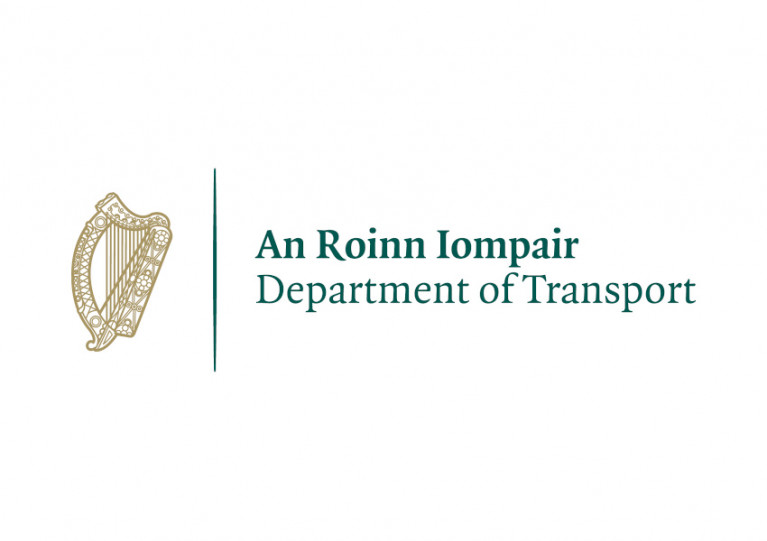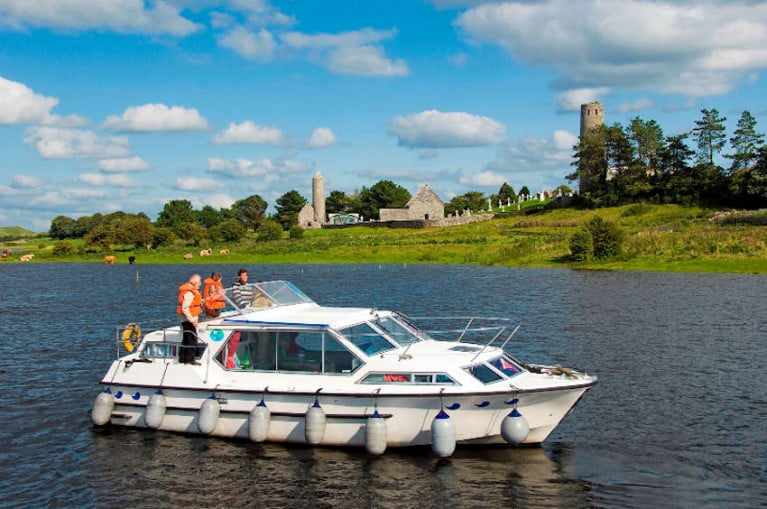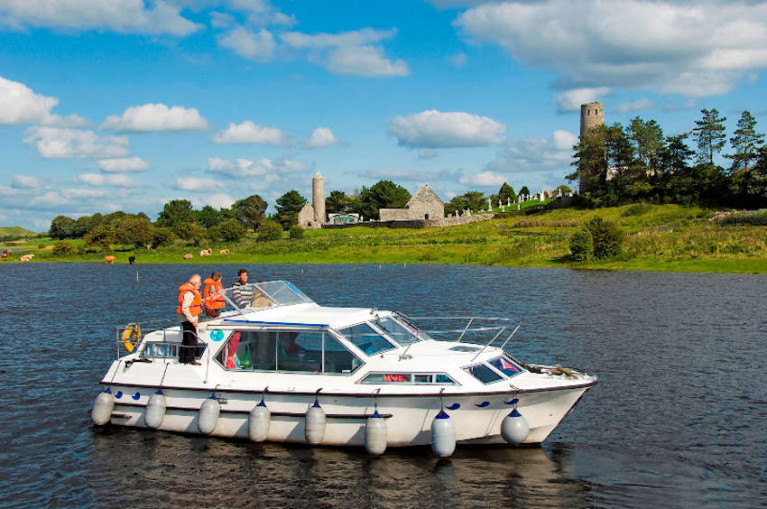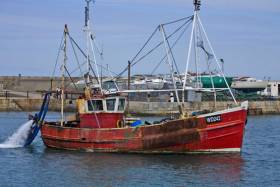Displaying items by tag: Public Consultation
Consultation on Revised Code of Practice for Small Fishing Vessels
The Department of Transport has opened a public consultation as it prepares to publish a revision of its Code of Practice for Small Fishing Vessels.
This Code of Practice sets the standards of safety and protection for all persons on board small fishing vessels, of less than 15 metres length overall, which go to sea to fish for profit.
The text has been prepared to serve as the relevant Code of Practice for section 4(9)(c) of the Fisheries (Amendment) Act 2003 (No. 21 of 2003) (as inserted by section 97 of the Sea-Fisheries and Maritime Jurisdiction Act 2006 (No. 8 of 2006)).
The Code of Practice deals with the vessel construction, its machinery, equipment and stability, and its correct operation, so that safety standards are maintained — and contains mandatory requirements in addition to recommendations.
It is anticipated that the new version will apply from 1 January 2022 and interested parties are now invited to provide comments on the latest revised version, which can be downloaded from Gov.ie.
Observations should be made to the Maritime Safety Policy Division at [email protected] by close of business on Monday 6 December.
Waterways Ireland is calling on members of the public to have their say on its new Climate Action Plan, the public consultation for which is now open.
This is the cross-border navigation authority’s first climate action plan. Focused on the decade to 2030, it sets out the vision for how Waterways Ireland will reach its key climate action targets.
This includes reducing emissions by at least 51% and improving energy efficiency by at least 50%. It also addresses Waterways Ireland’s aim to be a net zero organisation by 2050.
The draft Climate Action Plan details the seven objectives Waterways Ireland has identified as being essential to delivering on its climate ambitions.
The first two are centred on people and processes: setting out how Waterways Ireland will deliver through collaboration and engagement, and by leveraging its assets. The other five objectives focus on delivering across climate mitigation and climate adaptation. The integrated objectives align with the UN’s Sustainable Development Goals (SDGs).
Commenting on the plan, Waterways Ireland chief executive John McDonagh said: “Waterways Ireland is the custodian of Ireland’s inland navigable waterways and we see climate change as a critical challenge for our organisation and its stakeholders.
“As the body responsible for vital shared heritage across the island of Ireland, we have both an opportunity and a responsibility to take a leadership role in climate action. We will enthusiastically take on that mantle by identifying transformative and innovative ways to engage in climate action initiatives over the lifetime of the plan.”
Under the draft plan, Waterways Ireland commits to considering climate action in decisions around the acquisition, operation, maintenance and disposal of its assets, as well as the procurement of energy, consumables and third-party services.
These activities will be supported by targeted actions and initiatives in priority areas to implement climate mitigation and adaptation measures.
Progress in achieving key results will be measured quarterly, ensuring that activities are agile and can keep pace with carbon budgets and other measures developed for the sector.
“The draft plan reflects our commitment to take meaningful climate action to protect our inland waterways so they can continue to be enjoyed into the future. This includes adapting the waterways network to address climate change risks and reviewing programmes on an ongoing basis,” McDonagh added.
“Transport and energy are key target areas for us, and we will focus on targeting the decarbonisation of the buildings, infrastructure, assets and fleet responsible for the greatest proportion of our emissions.
“We have been moving in the right direction for a number of years. However, we recognise the need to be consistent with the objectives of the Paris Agreement and the ambitions of the governments of Ireland and Northern Ireland.
“The draft Waterways Ireland Climate Action Plan is highly ambitious and through its implementation, climate action will become integral to Waterways Ireland’s operations and developments. We encourage anyone with an interest in this area to have a look at the draft plan and to submit their observations.”
The draft Waterways Ireland Climate Action Plan can be found on the Waterways Ireland website HERE. Submissions can be made via email or post, details of which can be found at the previous link.
The closing date for submissions is Monday 17 January 2022. Following the 12-week consultation, submissions will be reviewed and the final Climate Action Plan will be prepared.
Waterways Ireland is hosting a Q&A webinar on the draft Climate Action Plan at 7pm on Thursday 11 November. To reserve your place, email [email protected]
Inland Fisheries Ireland (IFI) has launched a public consultation on the proposed introduction of a conservation byelaw prohibiting angling for Arctic char.
The glacial relict fish species is native to Ireland and is currently classified in the Irish Red Data Book as “vulnerable”.
This is due to a range of anthropogenic and environmental pressures such as water abstraction, eutrophication, climate change and introduction of non-native fish species.
The proposal currently under consideration is:
to request the Minister for the Environment, Climate and Communications, to introduce a conservation byelaw prohibiting any person from taking, or attempting to take, an Arctic Char (Salvelinus alpinus), by means of any fishery engine or rod and line from the waters of the State and to prohibit killing, retention or possession of Arctic Char.
All submissions must be marked ‘Public consultation - Proposed prohibition of angling for Arctic Char’ and must be received in writing by 5pm on Tuesday 16 November.
Written submissions can either be emailed to [email protected] or can be posted to Inland Fisheries Ireland, Station Road, Ballyshannon, Co Donegal, F94 WV76.
All valid submissions will be published on the Inland Fisheries Ireland website at www.fisheriesireland.ie
The Dundalk Bay cockle fishery is the subject of a public consultation opened this week by the Department of Agriculture, Food and the Marine.
Views of all those with an interest in the fishery are sought regarding the permits policy in this consultation which is being carried out in conjunction with the review of the relevant Fisheries Natura Plan.
The department says feedback received during the consultation will inform decisions on further development of the permits policy, in particular “a transparent set of criteria for issuing additional permits in future years where the fishery biomass and total allowable catch are sufficient to accommodate additional fishers”.
Submissions can be made online or by post — after downloading and completing the Consultation Submission Document available HERE — before the closing date of Friday 18 June.
Enquiries concerning this consultation are directed to [email protected]
Public Consultation Launched For Review of How Marine Accidents Are Investigated in Ireland
The Department of Transport has launched a public consultation on matters relating to an independent review of the current organisational structures underpinning marine casualty investigation in Ireland.
The move follows Transport Minister Eamon Ryan’s promise earlier this year to undertake a “fundamental review” of the process of how marine accidents are investigated here.
The consultation period runs from today, Monday 29 March, to Wednesday 21 April and has the key objectives of:
- Assessing the current organisational structures for marine casualty investigation in Ireland; and
- Setting out in a report to the minister any recommendations, including in relation to change, to achieve the most appropriate and effective structures for Ireland, taking into account national, EU and international obligations.
Full details of the consultation are available on Gov.ie and more information can be found in Marine Notice No 18 of 2021, a PDF of which is available to download below.
Findings of Public Consultation Confirm Dublin Port Abandon Plans for Cruise Berth Expansion
Plans to develop new cruise berths have been abandoned by Dublin Port Company (DPC) as part of the North Wall Quay Extension under the port's original Masterplan 2012-2040.
The Masterplan’s two objectives were to provide capacity to cater for growth in cargo volumes to 2040 and, secondly, to re-integrate Dublin Port with the city.
Pre COVID-19’s impact on cruising, Dublin had been expecting to welcome 125 cruise ships in 2020, including 10 full turnaround calls this summer.
The proposed cruise berth expansion plan got the green light in 2015 as part of the Alexandra Basin Redevelopment Project costing an estimated €108m.
However before committing to the development of the new berths at NWQE, DPC undertook a public consultation exercise between October 2019 to January 2020.
A total of 112 submissions were received including input from 42 companies with an interest in cruise tourism in Ireland such as representative and public bodies, coach operators, tour guides, port agents, shorex operators and a cruise line.
For much more SeatradeCruiseNews writes including the Cruise Consultation (report) which was launched to the public between October and January this year.
Last year as Afloat reported DPC defended its decision to reduce number of cruise ships calling to the capital.
The public consultation on the draft Shannon Tourism Masterplan and Environmental Report will close at 4pm this coming Wednesday 22 April.
Members of the public can review all the documents online and make their submission through the online survey.
The list of documents available to view are an Executive Summary, the draft Shannon Tourism Masterplan, a baseline study for the Masterplan, the Environmental Report, and AA Screen Report and Natura Impact Report.
This consultation is the next stage in an 18-month process to create a definitive document to support the development of tourism along the Shannon corridor.
Led by Waterways Ireland, with Fáilte Ireland, the steering group and working groups engaged representatives from Cavan, Leitrim, Roscommon, Longford, Offaly, Galway, Tipperary, Clare, Westmeath and Limerick county councils – which are all stakeholders in the longest of Ireland’s inland waterways.
8,400 Boats On Shannon Navigation Shows Big Demand For Mooring & Services, Says Tourism Masterplan
The Shannon Navigation plays hosts to some 8,400 boats, according to the draft tourism masterplan currently open for public consultation.
And the figure of predominantly private leisure vessels far exceeds the number of berthing spaces, which total 4,500 across 58 locations on the inland waterways between Limerick and Lough Allen.
“While the demand for mooring outweighs supply, there are variations across the navigation in the levels of demand,” the draft adds.
It goes on to state that lock passage data implies an increase of 2,800 boat passages — from 42,700 to 45,500 — in the five years between 2014 to 2018.
And it also suggests a review of shore-based service block provision to take account of customer requirements and consider the use of ‘smart’ technologies to enhance their experience.
The Draft Shannon Tourism Masterplan is a joint initiative of Waterways Ireland and Fáilte Ireland and is part of an 18-month strategy to develop tourism along the Shannon corridor over the next decade to 2030.
As previously reported on Afloat.ie, the consultation will continue amid the latest Covid-19 restrictions, with stakeholders encouraged to engage online.
Waterways Ireland has announced the opening of a public consultation on the Draft Shannon Tourism Masterplan and Environmental Report today, Wednesday 4 March.
The consultation documents will be available to the public both online and in the 10 county council offices along the Shannon and Shannon-Erne inland waterway corridors, and the consultation will remain open until Wednesday 22 April at 4pm.
The list of documents available to view are an Executive Summary, the draft Shannon Tourism Masterplan, a baseline study for the Masterplan, the Environmental Report, and AA Screen Report and Natura Impact Report.
Submissions can be made by completing an online survey. Surveys are also available at the host locations listed on the Waterways Ireland website and can be posted to Waterways Ireland’s Western Regional Office in Scariff, Co Clare.
The public consultation is also taking place in Northern Ireland, with documents available to view in the Waterways Ireland headquarters in Enniskillen. Relevant additional links include the NI Environmental Report and Habitats Regulations Assessment.
This consultation is the next stage in an 18-month process to reposition the combined Shannon Navigation and Shannon-Erne Waterway as a key tourism destination within Ireland’s Hidden Heartlands, identifying world class visitor experiences based on the region’s natural and cultural assets.
The Shannon Tourism Masterplan sets out “a bold and integrated framework for sustainable tourism development along the Shannon and Shannon-Erne”, Waterways Ireland says.
SLR Consulting and partners were commissioned to develop this Tourism Masterplan for the Shannon by Waterways Ireland in association with Fáilte Ireland and with the support of the 10 local authorities adjoining the River Shannon and Shannon Erne Waterway.
Once the public consultation is complete, submissions will be reviewed and a final draft of the document issued.
Marine Minister Michael Creed yesterday (Thursday 27 June) helped launch the public consultation process on the draft Climate Change Adaptation Plan for the agriculture, forest and seafood sectors.
“I am very pleased to launch this public consultation on adaptation planning,” said Minister Creed. “We have very much taken a joined-up approach to adaptation planning across the Department [of Agriculture, Food and the Marine] and have prepared a single plan covering the agriculture, forest and seafood sector.”
He added that in addition to reducing our emissions, “we need to ensure that our food production system is resilient and ready to adapt to future climate risk.
“Farmers, landowners and fishermen are very much to the forefront of dealing with the impacts of a changing climate in their everyday activities. However, climate change is not just an issue for the primary producer; it is something that everyone in the production chain needs to consider.
“The Irish agriculture, forest and seafood sector will not only be impacted by changes in climate here at home, but also by climate change globally.”
Andrew Doyle, Minister of State for food, forestry and horticulture, said the plan is “a next step in climate action planning. To successfully deal with the challenges facing us, we need to work together to make the right choices. While there will be challenges, there will also be opportunities.”
The draft Climate Change Adaptation Plan highlights a number of case studies identifying how the sector has and will continue to be impacted by changing weather patterns, and steps towards building resilience.
Feedback on the draft plan and suggestions as to how the department and the sector itself can best prepare to operate in a changing climate should be forwarded before the closing date of Friday 16 August.
Speaking ahead of the Our Ocean Wealth Summit in Cork earlier this month, Tánaiste Simon Coveney said the State is particularly aware of the threat posed by climate change to this island nation.
The subsequently launched Climate Action Plan from the Department of Communications, Climate Action and the Environment has been welcomed in many quarters, but has also been criticised for showing “little ambition”.





























































